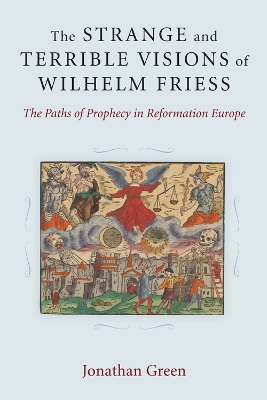Although nearly forgotten today, the prophetic writing of Wilhelm Friess was the most popular work of its kind in Germany in the second half of the 16th century. While the author “Wilhelm Friess” was a convenient fiction, his text had a long and remarkable history as it moved from the papal court in 14th-century Avignon, to Antwerp under Habsburg oppression, to Nuremberg as it was still reeling from Lutheran failures in the Schmalkaldic War, and then back to Antwerp at the outbreak of the Dutch revolt.
Dutch scholars have recognised that Frans Fraet was executed for printing a prognostication by Willem de Vriese, but this prognostication was thought to be lost. A few scholars of 16th-century German apocalypticism have briefly noted the prophecies of Wilhelm Friess but have not studied them in depth. The Strange and Terrible Visions of Wilhelm Friess is the first to connect de Vriese and Friess, as well as recognise the prophecy of Wilhelm Friess as an adaptation of a French version of the Vademecum of Johannes de Rupescissa, making these pamphlets by far the most widespread source for Rupescissa’s apocalyptic thought in Reformation Germany. The book explains the connection between the first and second prophecies of Wilhelm Friess and discovers the Calvinist context of the second prophecy and its connection to Johann Fischart, one of the most important German writers of the time.
Jonathan Green provides a study of how textual history interacts with print history in early modern pamphlets and proposes a model of how early modern prophecies were created and transmitted. The Strange and Terrible Visions of Wilhelm Friess makes important contributions to the study of early modern German and Dutch literature, apocalypticism and confessionalisation during the Reformation, and the history of printing in the 16th century.
- ISBN13 9780472119219
- Publish Date 19 May 2014
- Publish Status Active
- Publish Country US
- Imprint The University of Michigan Press
- Format Hardcover
- Pages 224
- Language English
